There are over 50 backcountry campgrounds in Banff National Park alone, and over 994.2mi of hiking trails to get you there. All of these trails and sites can only be accessed under your own power – usually by hiking, but a few are either canoe or bike accessible as well. To see the campgrounds, download the Backcountry Trails in Banff National Park brochure. Of course, the surrounding Rocky Mountain Parks like Yoho, Kootenay and Jasper National Parks contain hundreds more campgrounds, as well as the neighboring Kananaskis Country.
Visiting a backcountry campground is a great way to experience the awe-inspiring scenery that makes backpacking in Banff incredible, and a key part of the Rocky Mountain Parks World Heritage Site. While backpacking in Banff you can appreciate areas rarely seen by most park visitors, away from the crowds of Banff Avenue.
Remember, although the hiking season in the Rockies is May – October, most higher-elevation trails will still be snow bound until early July. Below is a sample of some of the best backcountry campgrounds in Banff and the best time of years to visit them.
Table of contents
Backcountry camping in Banff
When to go backpacking in Banff National Park
Permits and rules for backcountry camping in Banff
How to book a backcountry campsite in Banff
Prepping for bears and wildlife – stay safe in the Banff backcountry
Are campfires allowed in the Banff backcountry
Wilderness camping in Banff National Park
Other tips + etiquette for backpacking in Banff
The best backcountry campsites in Banff National Park
Canadian Rockies Articles
Backcountry camping in Banff
Camping in Banff National Park is a must for all fans of the great outdoors, offering you the opportunity to get out in the wild and really connect with nature. Banff National Park covers 6.641 square kilometers of beautiful Rocky Mountain terrain, encompassing craggy peaks and ridges, glistening icefields and glaciers, dense forests and wildflower meadows. If you want to immerse yourself in nature, it’s time to get back to basics at one of these wonderful Banff campgrounds!
Camping near Banff is likely to bring you closer to some of the region’s unique landscapes and magnificent wildlife. You’ll have the chance to see deer, elk, caribou, bighorn sheep, mountain goats and even bison. The park is also home to predators such as wolves, coyotes and black and grizzly bears, so it’s important to take precautions, although incidents with humans are relatively rare. Hiking in the backcountry will take you away from the crowded trails and deeper into the wilderness, where you’ll have the opportunity to appreciate the majesty of nature up close.
Backcountry camping is a fantastic family activity, allowing you to bond with your kids and teach them some important skills. Camping out in the wilderness has been shown to improve health and mental wellbeing, as well as being a fun activity, whatever your age! Whether you’re on your own, among friends or with family, a trip to one of these Banff campgrounds is sure to be a memorable and enjoyable way to spend a vacation or a long weekend.
When to go backpacking in Banff National Park
Prime hiking season runs from July through mid-September. Until late June, many passes are still snow-bound and there may be a risk of avalanches. Trails tend to be muddier at this time and the best hiking is at lower elevations or on drier, south facing slopes. By the middle of July, most alpine passes are snow-free.
Permits and rules for backcountry camping in Banff
To spend the night in any of Banff’s backcountry areas, you will need a backcountry permit. Permits are $9.80 a night per person, and group size is limited to 10 people. You can spend up to 3 nights in one site before needing to move on.
Backcountry camping permits in Banff National Park are limited, so you’ll want to reserve your backpacking permit well in advance for trips in peak season (June through early September). It’s wise to book early for trips on either side of peak season, too. There’s a non-refundable reservation fee of $11.70, no matter how many nights you stay. This is in addition to the National Park Pass needed to enter Banff National Park.
Reservations for backpacking campsites in Banff National Park usually open in January on the National Parks website.
How to book a backcountry campsite in Banff
To book a backcountry campsite in Banff, you can book 3-months in advance. We normally call either 403-522-1264 (Lake Louise) or 403-762-1556 (Banff) to book, though you can go in-person at a Banff National Park Visitor Centre, but many campgrounds get booked out so don’t leave any bookings for a backcountry campsite to the last minute. You can also use the online reservation system.
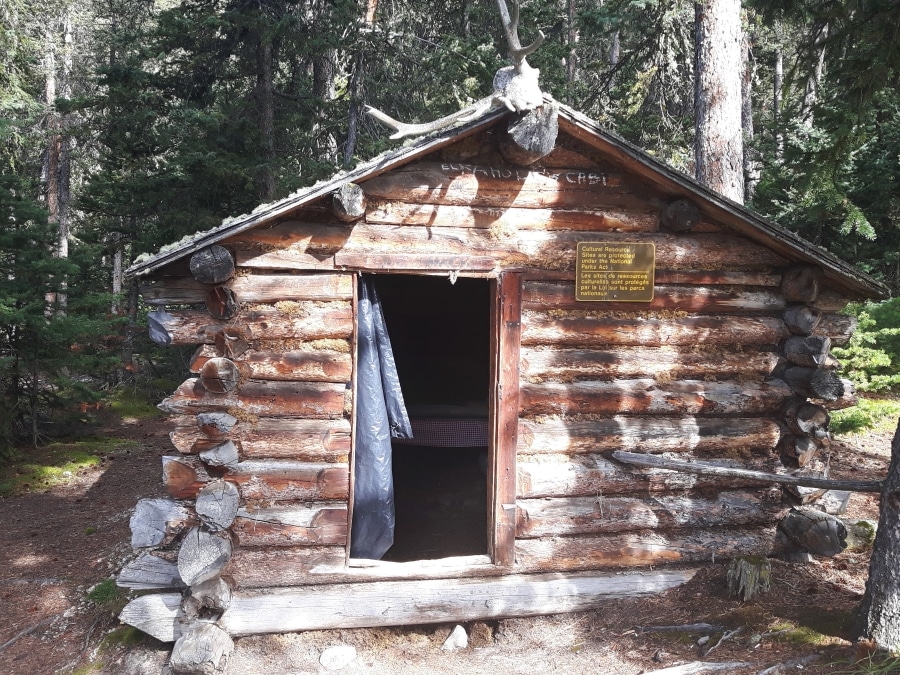
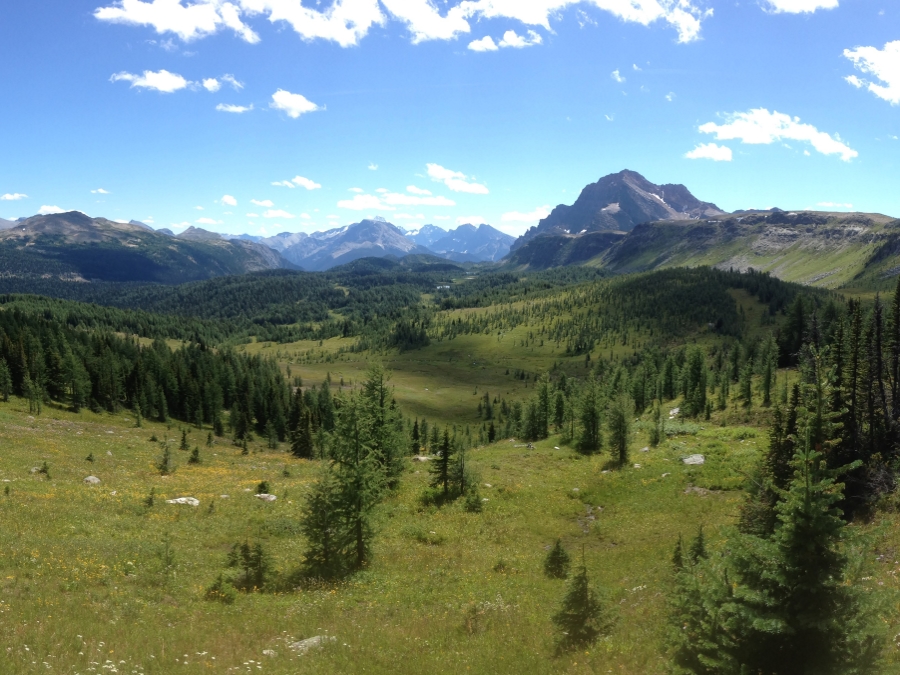
Prepping for bears and wildlife – stay safe in the Banff backcountry
Grizzly bears and black bears are common in Banff, and the entire place is teeming with elk, fox and mule deer. Cougars, lynx, wolverines and wolves are also out there, so caution is warranted no matter how close to the front country you might stay. Always use the food storage cables or lockers at the backcountry campsites; if they aren’t provided, such as at random camping spots, you’ll need to bring a bear canister or rig up your own storage.
As always, do not approach wildlife – of any kind. Stay at least 328ft from bears, and slowly back away if you come across any in your path. With most creatures, if you leave them alone, they’ll return the favor.
Also, keep an eye out for ticks, which can carry Lyme Disease.
Are campfires allowed in the Banff backcountry
Some backcountry sites allow fires in designated metal fire rings. Some do not. Keep any fires small, and never leave it unattended. It’s highly recommended that you carry a backpacking stove for sites that do not allow fires. It’s up to you to know which sites allow open fires.
Wilderness camping in Banff National Park
Wilderness camping (dispersed camping) is only allowed in designated areas in the remote reaches of the park. You must camp at least 3.1mi from the trailhead or any designated campgrounds, at least 164ft from any trail, and 230ft from any water source. Fires are not allowed when random camping. A backcountry permit is required for random camping.
Other tips + etiquette for backpacking in Banff
Pack in, pack out. Banff is absolutely gorgeous – please keep it pristine and just the way you found it!
Take Only Photos. You know the drill; leave all rocks, fossils, antlers and wildflowers, etc, where they belong.
The best backcountry campsites in Banff National Park
Glacier Lake
Trailhead Access: Icefields Parkway, 0.6mi past Saskatchewan Crossing Resort on the west side of the highway.
Distance: 5.5mi (one way)
Elevation gain: 689ft
Campsites: 5
Route Guide for Glacier Lake Backpack
This route is a great choice for the early season. The low elevation means the area will be snow and ice-free in late spring, and the gentle, rolling trail is good for a “warm up” backpack to improve your early season fitness!
Glacier Lake is a hidden gem of a campground, and one of the best Alberta campgrounds. It’s often quiet, perhaps because of the distance to the trailhead, or the relative “easiness” of the hike in, so you won’t be fighting for space. This campground is a true piece of backcountry paradise.
The drive to the trailhead is about 2.5 hours from Banff, but the trail is short enough that you can still complete both in a day. The early section of the hike-in offers some excellent views of the braided Howse River with Mt Murchison providing an imposing backdrop. The rest of the trail is primarily in the trees, with large patches of buffalo berries (take great care in July and August when bears are out looking for them).
While Glacier Lake is almost the same elevation as the trailhead, the trail takes you up and over a small rise, a shoulder of the nearby Survey Peak, so you gain and lose approximately 689ft along the way. Look out for a survey marker from 1928 carved into a tree near the end of the trail.
Glacier Lake is the fourth largest lake in Banff National Park, and the 5 tent sites sit close to the lakeshore. This is also one of the few backcountry campsites that allows campfires (in fire rings), however the area surrounding has been picked pretty clean of deadfall, so you may need to bring your own firewood! Nevertheless, this is one of our favorite places for camping near Banff.
A historic cabin is a great point of interest, and a day hike along the lakeshore towards Lyell Glacier is an option for a longer trip.

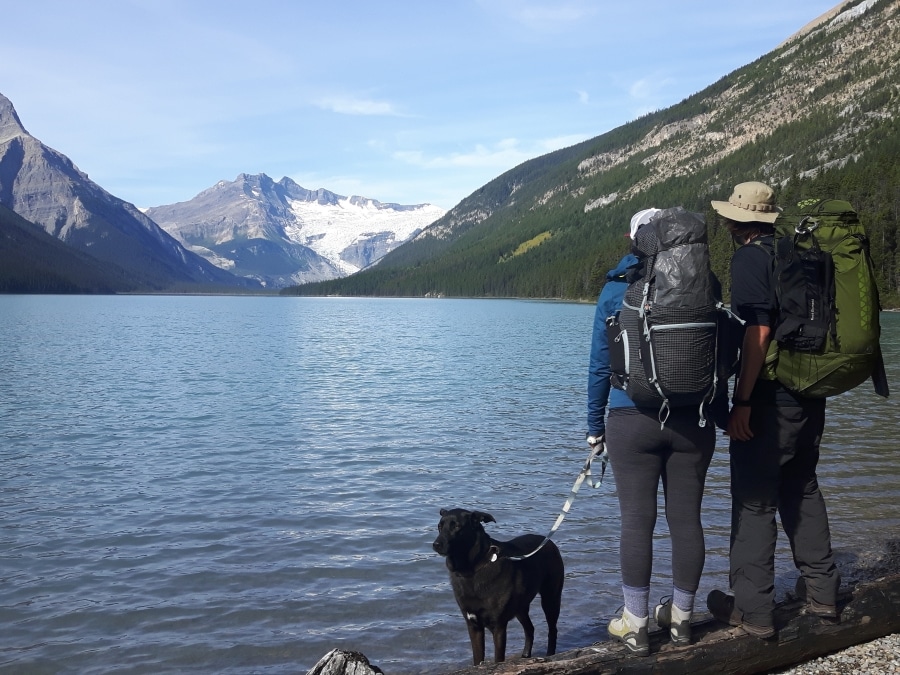
Egypt Lake
Trailhead Access: Sunshine Village parking lot – turn on to the Sunshine Access Road 4.8mi west of Banff, and follow to the end. Trailhead is the same one for Healy Pass, behind the base lodge.
Distance: 7.7mi (one way)
Elevation gain: 2149ft
Campsites: 15, plus the shelter that sleeps 12
Route Guide for Egypt Lake Backpack
A true classic backcountry camping experience in the Banff National Park, this hike to Egypt Lake takes in one of the best trails in the Rockies. You’ll climb over Healy Pass and then follow the route down to the stunning Egypt Lake. The best time to visit this campground is July or August, when the wildflowers are in full bloom, although September can also be stunning when the trees are resplendent in vibrant fall colours.
The area surrounding Egypt Lake in Banff’s backcountry offers a multitude of classic Rockies features, and is sure to please everyone in your group. The route follows Healy Creek until you start to ascend to Healy Pass Meadows, one of the best alpine wildflower meadows in the park. Rolling rainbow hills of flowers lie in the shadow of the Monarch Ramparts, a crown-like wall of rock visible from nearby Sunshine Village.
The campground itself is situated on a bench above picturesque Pharaoh Creek, and is one of the largest backcountry campgrounds in Banff National Park.
From the campground, you’ll be surrounded by abundant possibilities for day hikes and lots of beautiful areas to explore. There is the easy 0.3mi stroll to Egypt Lake itself, the short but steep uphill climb to Mummy and Scarab Lakes, the high, marmot-filled Whistling Pass, the easy 3.1mi Pharaoh Lake-Black Rock Lake outing, or you can even hop the border into BC for a trip to Talc Lake!
This is one of the best campgrounds in Alberta if you’re a beginner backpacker. For colder nights, or first timers slightly nervous about sleeping in a tent, the rustic Egypt Lake Shelter provides a sturdy roof and walls, and a cozy fire to tell stories around. This can be booked through Parks Canada’s online reservations system or via phone. If you want to experience this area without hiking 7.7mi with your pack, the Healy Creek campsite is located approximately 3.1mi from the trailhead, so you can split the distance over two days.
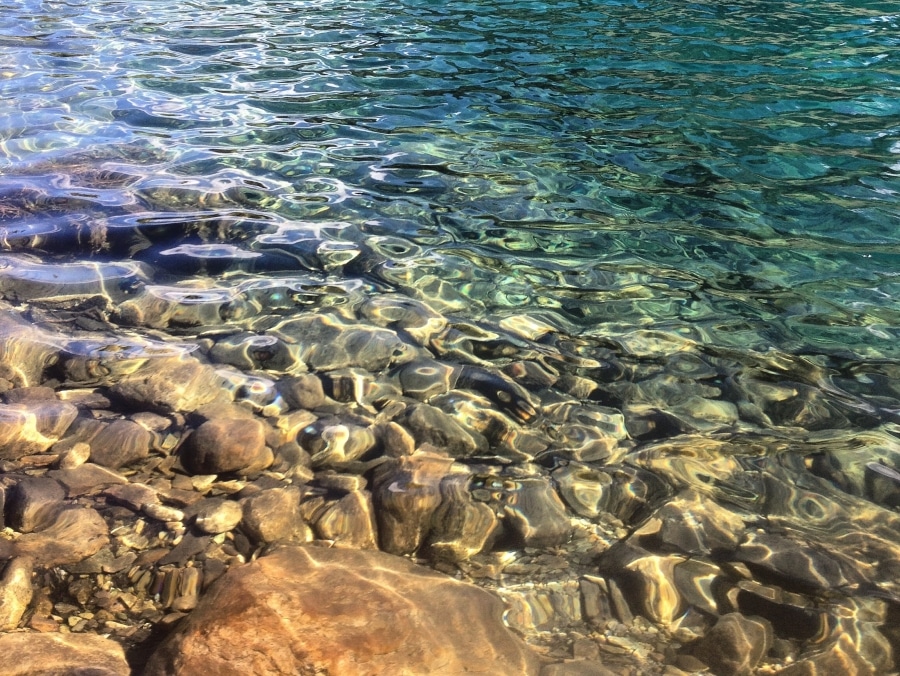

LM11/Mt Inglismaldie
Trailhead access: Lake Minnewanka day use area, approximately 6.2mi from Banff.
Distance: 6.9mi hike or bike, slightly shorter paddle.
Elevation gain: 197ft
Campsites: 5
Route Guide for Lake Minnewanka Backpack
The backcountry campsites along Lake Minnewanka are incredible, with a fairly easy walk in and stunning views. There is nothing better, in our opinion, than sharing a glass of wine snuggled on the beach looking out at Lake Minnewanka as dusk falls.
The largest lake in Banff National Park, Lake Minnewanka is approximately 17.4mi long. It has 5 backcountry campgrounds along its northern edge, and one on the southern. All are named, but more easily identified by their distance from the trailhead: LM8, LM9, LM11, LM 20, LM22 and LM31.
All the backcountry campgrounds on Lake Minnewanka are excellent, scenic campgrounds and allow campfires. LM11/Mt Inglismaldie campground is our favourite. It is the perfect distance – easy enough to get to in a day, far enough away to be away from day hikers. It also has the best beach.
This is a great early season option – you can soak up the sun’s rays on the beach or paddle through aquamarine waters, while higher up in the Rockies, some visitors are still skiing in May! Lake Minnewanka is the only lake in Banff National Park to allow motorized vessels, so if you have access to a boat, you can bring a lot more gear (and beer) to the campsite with you. Beware of wind if you take a boat, the headwinds can make progress very slow while paddling.
If a longer trip with day hiking options are of more interest to you, LM8 & LM9 are closer to the junction of the Aylmer Pass trail – the pass, lookout or summit scramble are excellent places to explore. Note that deer’s frequent LM8 and LM9, so there are often more chances to get a tick at these campgrounds.
It’s important to remember that the Minnewanka trails come under an annual travel restriction – no dogs, bikes or groups less than 4 between 10th July & 15th September, and the LM8 campground is closed at this time.
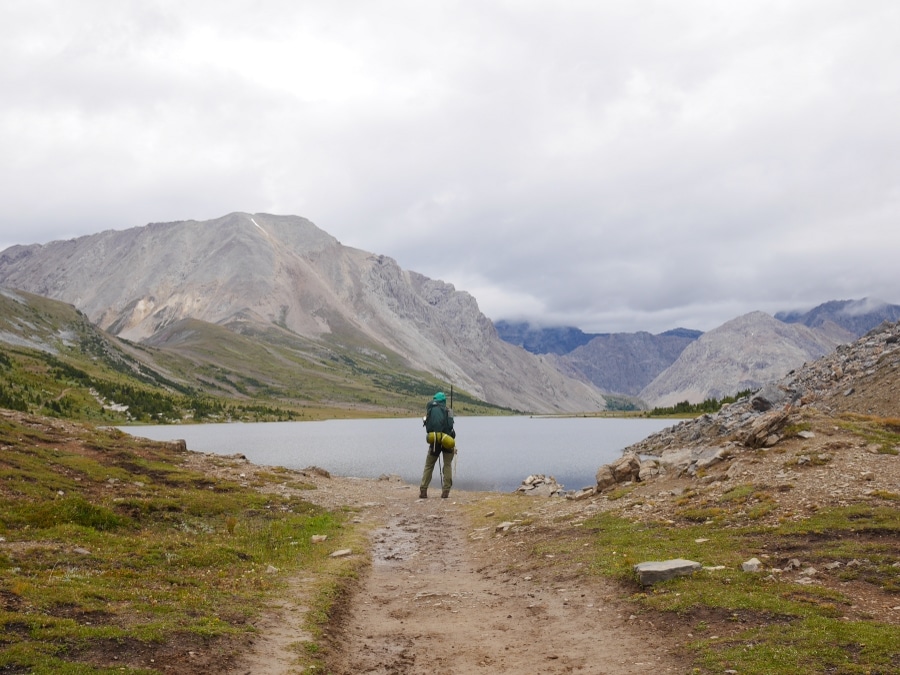

Baker Lake
Trailhead access: From Lake Louise, drive along Whitehorn Drive towards the ski area. Take the right turn after the 1A, at the sign for Skoki Lodge and park at the Fish Creek trailhead 0.6mi down.
Distance: 8.1mi
Elevation gain: 2149ft
Campsites: 10
Route guide for Baker Lake and Skoki Region Backpack
A stay at Baker Lake is a real bucket list activity for hikers, and an absolute must for anybody considering a backpacking trip in the Canadian Rockies. You’re guaranteed beautiful terrain, a slice of history and some epic views, as well as a stay at one of the best Banff campgrounds.
Baker Lake is a high subalpine lake in the Skoki region of the Lake Louise backcountry, popular with fly fishermen. The hike starts on the Lake Louise ski-out, a tedious 2.5mi uphill to the Temple day lodge and official start to the trail. If you’re on the road at the right time, you may be able to hitch a lift on the Skoki lodge van, heading in to pick up their guests at Temple.
From Temple Lodge you climb to Ptarmigan Lake at Boulder Pass, an area with abundant wildlife. Baker Lake lies on the east side of the pass. From the campground you can make a big 8.8mi loop hike around Fossil Mountain, visiting historic Skoki Lodge (we recommend stopping for afternoon tea for $5).
If you’re looking for more of a challenge, consider a scramble up Fossil Mountain itself. You can also visit the stunning Skoki Lakes (Zigadenus and Myosotis), however you’ll need to do some route finding to make a loop over Packers Pass, down to the Skoki Valley, and back over Deception Pass, approximately a 7.5mi day trip from Baker Lake.
For a multi-day trip, you can combine this with nights at Red Deer Lakes campground and Merlin Meadows campground for a 24.9mi+ round trip over 3-4 days. This is an epic trip and we highly recommend it!
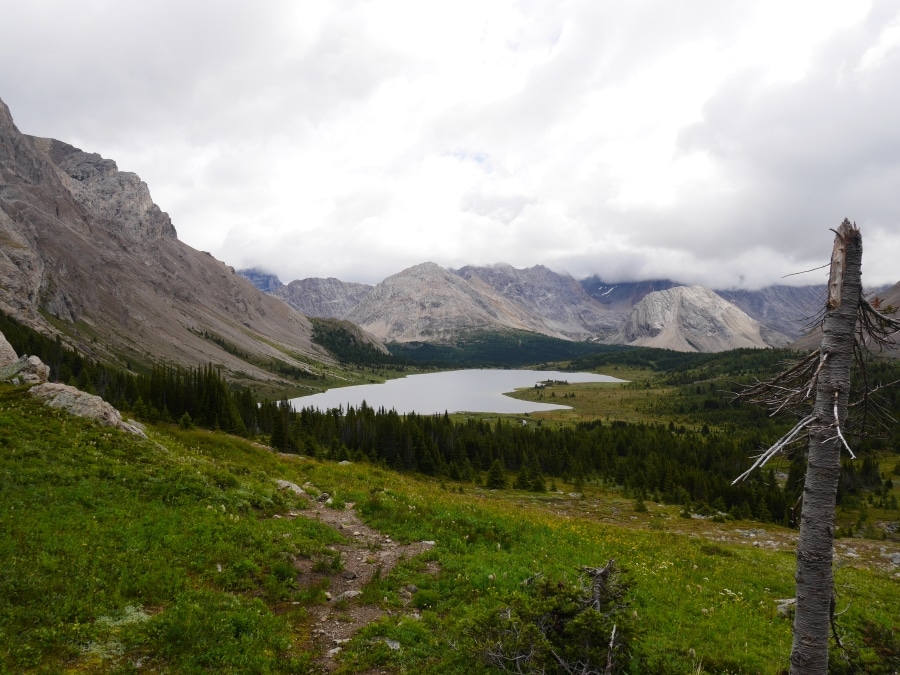
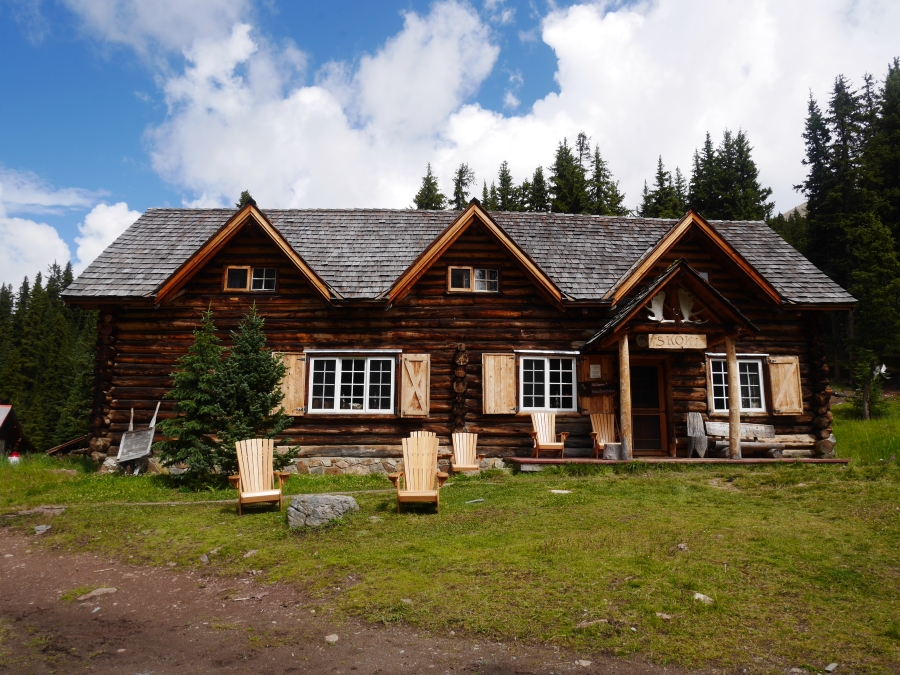
Devon Lakes
Trailhead access: From Lake Louise take highway 93, the Icefields Parkway, north for 14.5mi to the Mosquito Creek Hostel. The trip starts at the trailhead across the road.
Distance: 37.9mi round-trip
Elevation gain: 6667ft
Campsites: Fish Lakes
Route Guide for Devon Lakes Backpack
For a true multi-day backpacking trip through some of the park’s most exotic scenery, Devon Lakes can’t be beat. This 37.9mi trek takes you to two remote alpine lakes deep in the heart of the park, 24.9mi of which is above treeline. It’s a gorgeous experience, but one that can really only be attempted from July through September.
You’ll spend the night at Fish Lakes Campground, which – like Glacier Lake – has 5 tent sites, located near Fish Lake in a green, forested area. There are picnic tables and an outhouse at this campsite, so you’re not totally roughing it. There’s also a bear pole, which you’ll need, and be wary of the mosquitoes. They can be rough!
While not as crowded as Glacier Lake due to its remoteness, this site still fills up during the summer as well, so plan ahead if you want to attempt this epic trip.
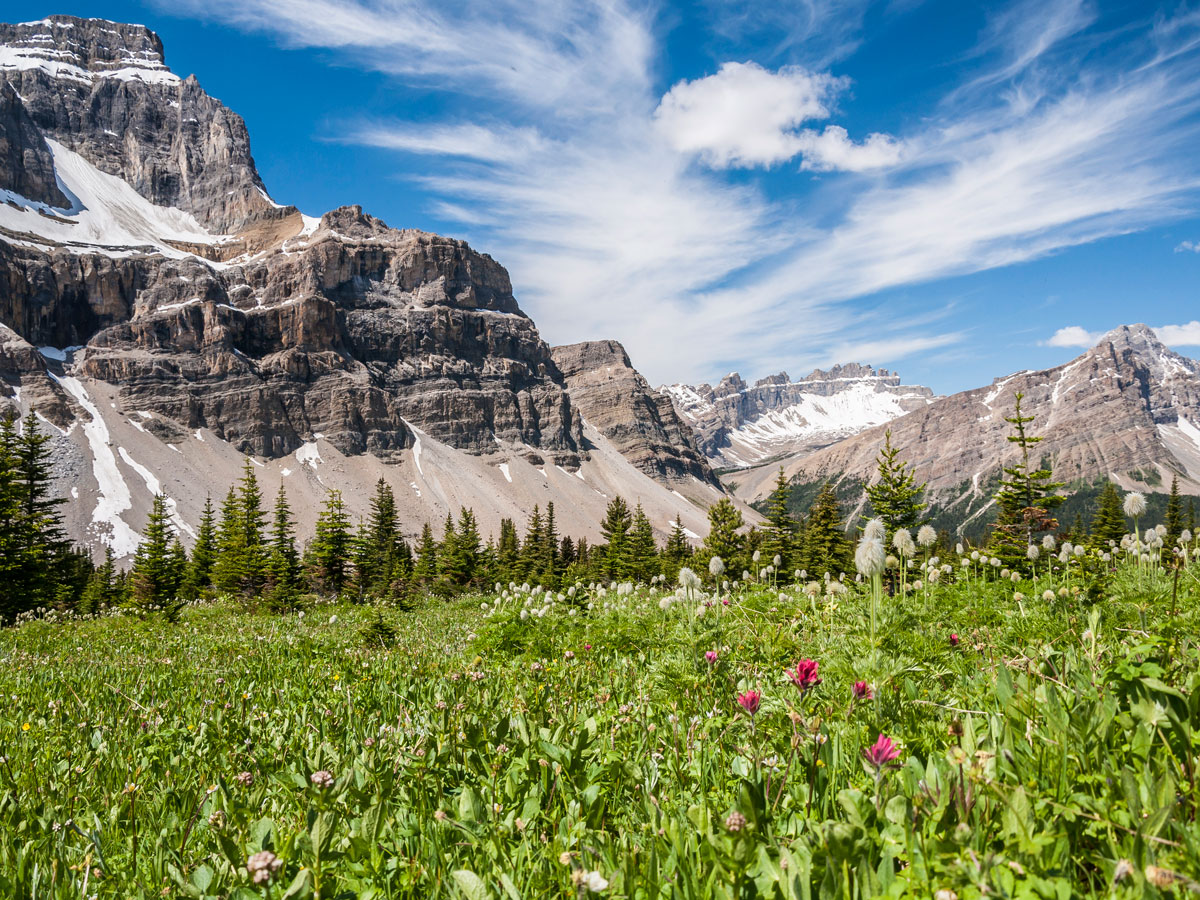
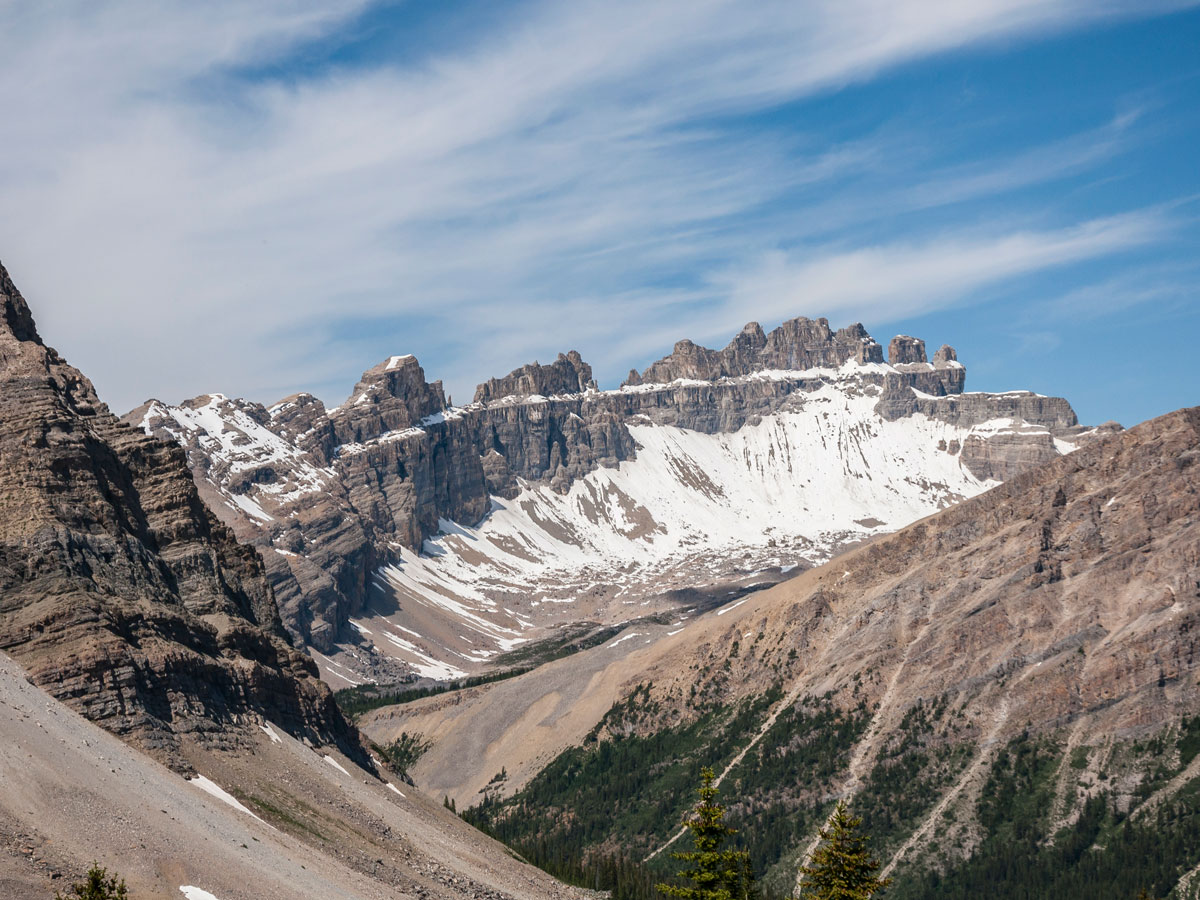
Paradise Valley
Trailhead access: From Lake Louise Village, take the Lake Louise Drive and turn off onto Moraine Lake Road. Park after 1.5mi in the Paradise Creek Parking lot.
Distance: 5.2mi one-way
Elevation gain: 1788ft
Campsites: Paradise Valley
Route Guide for Paradise Valley Circuit
Backpacking up Paradise Valley is incredible, however this is also prime grizzly habitat, and reservations are only allowed within 24 hours of the start of your trip. Reservations must be made in person at the Banff or Lake Louise Parks Canada Visitor Centres.
We love this trip as it offers some of the best views in the park, on the opposite side of Sentinel Pass from Moraine Lake. Unfortunately, the campground is often closed July through September due to grizzly activity. Groups of 4 are required for safety. The trailhead is off Moraine Lake Road. There are 8 backcountry tent sites at Paradise Valley with some pretty epic views. It’s a quieter and less traveled trip, too, so snagging a site shouldn’t be too hard.
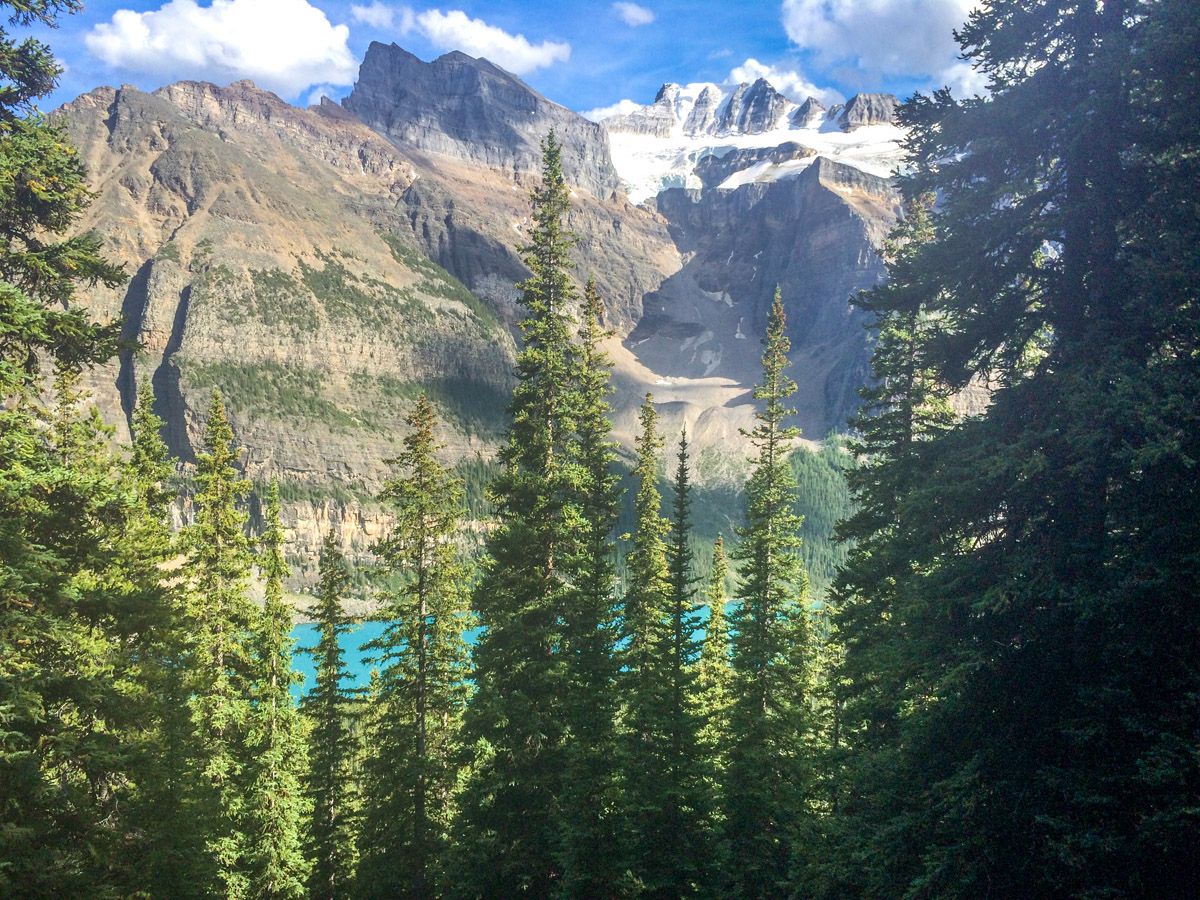
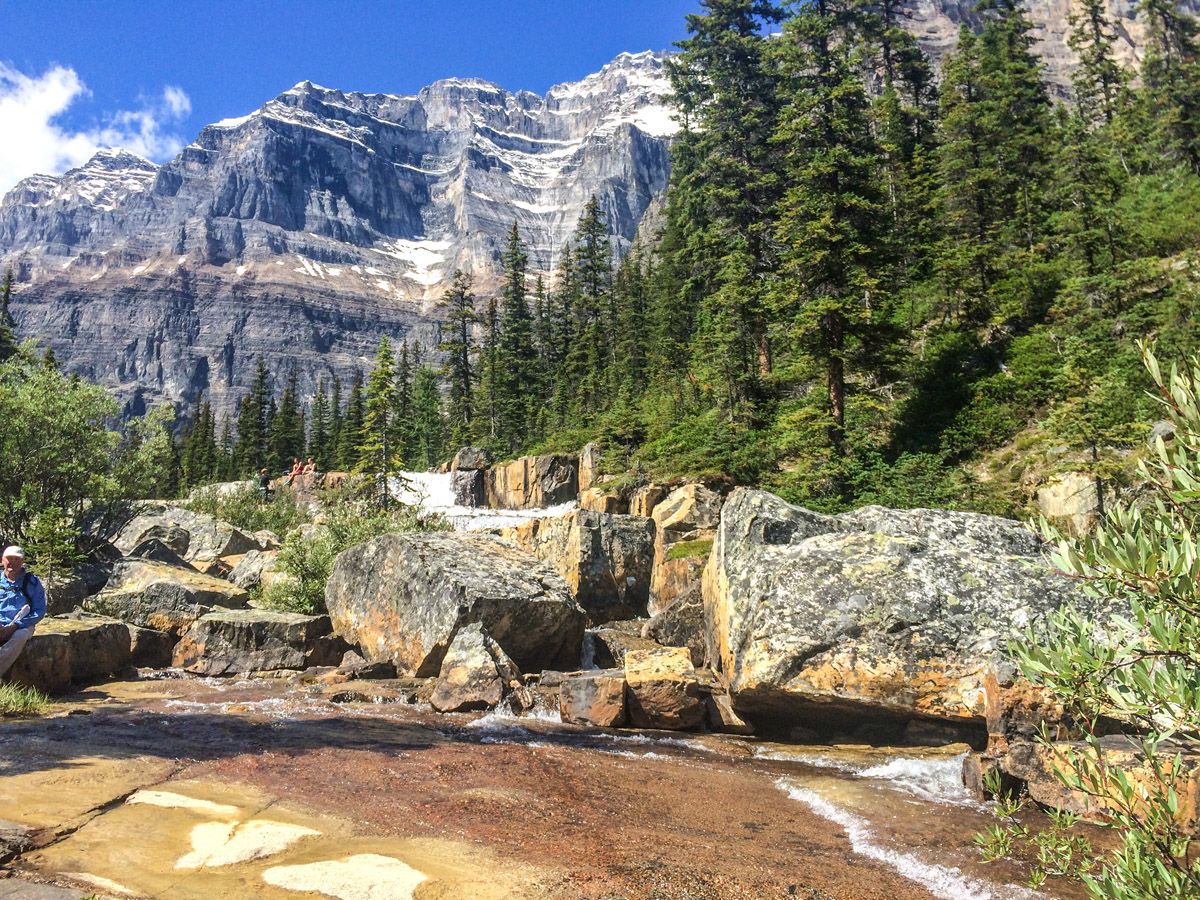
Molar Pass
Trailhead access: From Lake Louise take highway 93, the Icefields Parkway, north for 14.5mi to the Mosquito Creek Hostel. The trip starts at the trailhead across the road.
Distance: 32.3mi return
Elevation gain: 2149ft
Campsites: Mosquito Creek, Fish Lakes, Molar Creek
Beginning at Mosquito Creek on the Icefields Parkway, this is a 4-day, 3-night trip that covers 32.3mi over 2 stunning mountain passes and some of the most jaw-dropping views Banff has to offer, including vast, wide-open expanses of alpine meadows abutted by rocky peaks. Spend the first night at Mosquito Creek, the second at Fish Lakes, and the last as Molar Creek, or do it in the opposite direction and reverse those campsites. Note: If staying at Molar Creek, be careful not to pass the campsite, which is marked by only one, easy-to-miss sign.

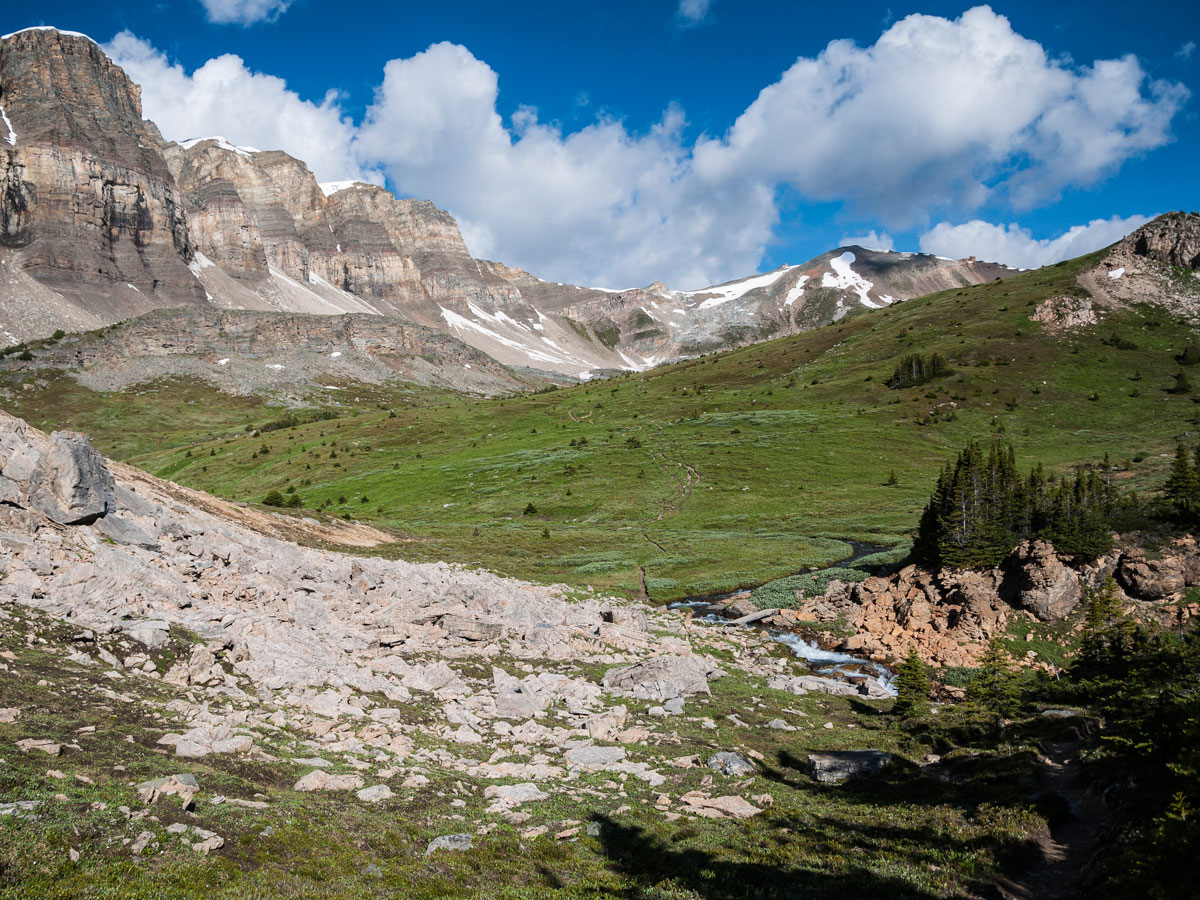
Sawback Trail, Banff
Trailhead access: From Lake Louise, drive along Whitehorn Drive towards the ski area. Take the right turn after the 1A, at the sign for Skoki Lodge and park at the Fish Creek trailhead 0.6mi down.
Distance: 46.0mi return
Campsites: Hidden Lake, Baker Lake, Wildflower Creek, Badger Pass, Johnston Creek, Larry’s Camp or Mystic Valley.
If you’re in the mood for a true backcountry odyssey in Banff, gear up for the Sawback – a 46.0mi trail that will take you through the craggy, intimidating Sawback Mountain Range. You’ll get to climb three equally mighty mountain passes and navigate a sampling of all the varied terrain Banff is known for. You’ll also need 4 to 6 days to do it.
Sawback Trail goes from near Lake Louise to just outside of Banff village. You can start at either – from the Fish Creek Trailhead near Lake Louise or the Cascade Amphitheatre Trailhead on the other end. If starting at Fish Creek, you’ll stay at Hidden Lake campground on night 1, followed by Baker Lake, Wildflower Creek, Badger Pass Junction, Johnston Creek, Larry’s Camp and Mystic Valley the following nights, depending on how quickly you want to accomplish it. You can also reconfigure the sites for a shorter trip more to your liking.
There’s not a lot of elevation gain over the course of those 46.0mi, but the long distances plus the rugged terrain can be challenging. This is one backpacking trip for which you definitely want to know yourself and your limits.
The trick with this trip is planning ahead and getting all the campsites you want in the right order; you’ll want to book as early in the year as possible, especially if going during peak summer months. But if you can get them all, trust us – it’s a true alpine experience every step of the way.
-
Canadian Rockies Articles
Check out this list of articles to help you plan your next holiday in the Canadian Rockies. Get tips and valuable information that will turn your trip into an incredible adventure!
Trip Planning in the Canadian Rockies
- Planning your trip to Banff National Park
- Planning your trip to Canmore
- Planning your trip to Castle Provincial Park
- Planning your trip to the Icefields Parkway
- Planning your trip to Jasper National Park
- Planning your trip in the Kananaskis
- Planning your trip to Lake Louise
- Planning your trip to Waterton National Park
- Planning a Family trip to the Canadian Rockies
- Planning a Family trip to Canmore
- List of tours in the Canadian Rockies
Canadian Rockies Hiking and Camping Articles
- Best Dog Friendly Hiking Trails in Alberta
- Best Family Hikes in Banff National Park
- Best Family Hikes near Calgary
- Best Larch Hikes in Alberta
- Frontcountry Camping in Banff National Park
- Underrated Campgrounds in Alberta
Canadian Rockies Backpacking Articles
- Best Backpacking Trails for Families in the Rockies
- Best Backpacking Trails in Banff National Park
- Best Backpacking Trails in Canada
- Best Backpacking Trails in Western Canada
- Best Backcountry Campgrounds in Banff National Park
Other Canadian Rockies Articles

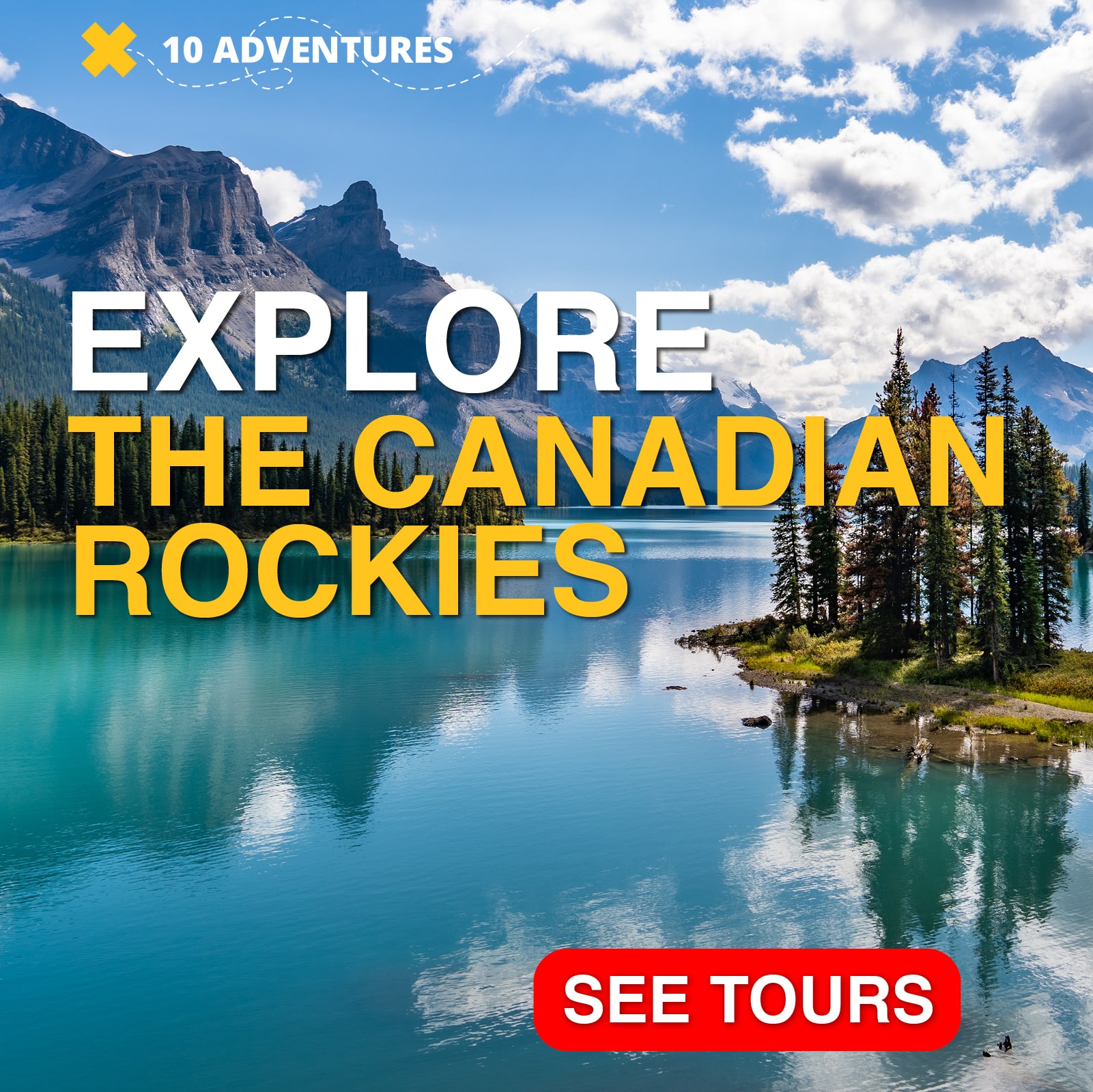


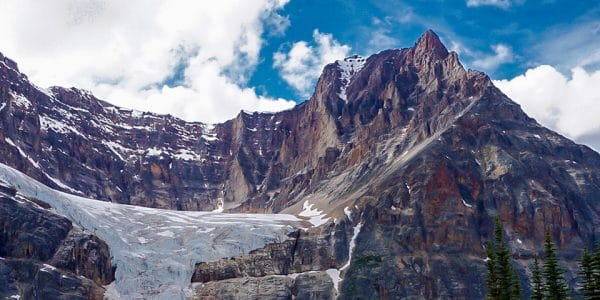
Comments
Carole6 years ago
We backpacked in the Skoki area last year. Take bug spray if you're going early in the season, it was very buggy!
Reply